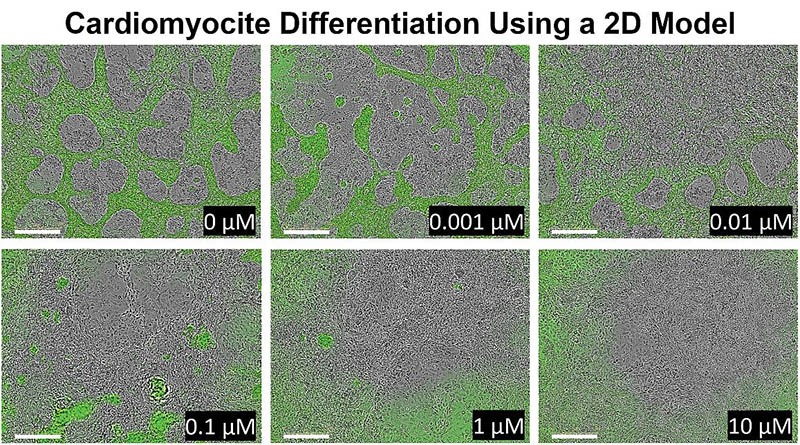New 3D model shows how cadmium exposure may affect heart development
NIH researchers develop new tools to demonstrate how environmental agents can lead to diseases
Researchers have developed a three-dimensional model that shows how exposure to cadmium might lead to congenital heart disease. Affecting nearly 40,000 newborns a year, congenital heart disease is the most common type of birth defect in the United States. The model was created by scientists at the National Institute of Environmental Health Sciences (NIEHS), part of the National Institutes of Health.
Cadmium is a metal that can be released into the environment through mining and various industrial processes, and it has been found in air, soil, water, and tobacco. The metal can enter the food chain when plants absorb it from soil. Previous studies suggested that maternal exposure to cadmium might be a significant risk factor for congenital heart disease.
Using models derived from human cells and tissues, called in vitro models, researchers designed a 3D organoid model that mimics how the human heart develops. The researchers saw how exposure to low levels of cadmium can block usual formation of cardiomyocytes, which are the major type of cells that form the heart. In doing so, they revealed the biological mechanisms that might explain how cadmium could induce heart abnormalities.
“The models we created are useful for not only studying cadmium, but for studying other chemicals and substances as well,” said study lead Erik Tokar, Ph.D., from the Mechanistic Toxicology Branch of the NIEHS Division of Translational Toxicology (DTT).

2D model showing how the pluripotent stem cells react to human relevant doses of cadmium over 8 days. From the control in the first panel, to the last panel, researchers can see how the differentiation to cardiomyocytes is inhibited with different doses of cadmium.
This page was last updated on Wednesday, November 2, 2022